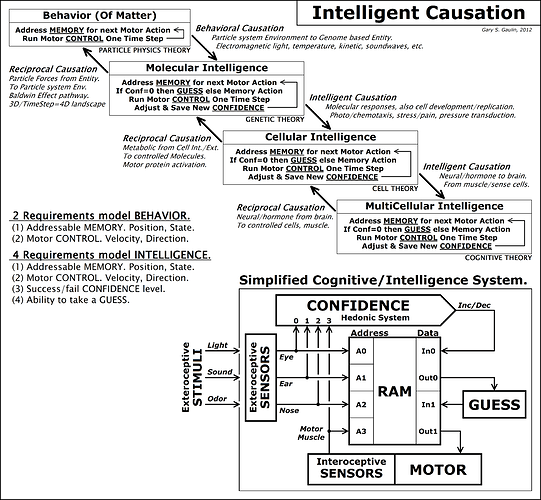I sense that the (well contested but well enough still holding true) Cognitive Tradeoff Hypothesis contains clues as to how to use HTM theory’s thousand brains way of thinking to model cell migration and development in a human evolutionary context, which would be useful to other fields of science like biochemistry or evolutionary biology:
In this case it’s a matter of getting more into the mind of cells in general. For modeling purposes rule based behavior would work fine to produce a representation of the underlying chemistry that attracts autonomous cells to each other in a way that forms minicolumns then columns.
From what I understand all tissue cell types have the ability to produce action potentials. When networked they exchange genetic information and signal molecules with each other.
Cognitive models normally only model neural action potentials in the brain. Yet other than red blood cells or others that lost their nucleus and mobile immune cells; any cell likely becomes a one bit SDR sensor of something, simply by connecting bidirectionally to it then sense what happens. If it’s a part of a muscle then motion sensors might get excited, try to find then signal the controlling cell/neuron for more, to get another view to work from. Social cells like ours are already very good at learning how to ahead of time respond to something it senses coming, predicts. As a result each cell has HTM inside. Same thing as I found true in my model then later illustrated like this:
The only difference is that you can code HTM behavior into an autonomous population of cells or zygote, then let them connect together to become the multicellular HTM system.
Coding from the genetic level would start with a single zygote that divides into cells that have to find a place to be useful or their cell line stops right there, during development. In biology not all cell lines stay going, ones that work like they need to fill the niche they’re in will. Regardless of which of the three levels chosen to model at the result is an autonomous cognitive system, causing emergence of the next then next possible level, without having to add code.
To sum up in context of my thousand brains related model:
A genetic system controls cell reproduction and morphology of only one cell, therefore the multicellular morphology that develops is dependent upon the cell migration and behavior patterns of all the autonomous cells in the colony.
We have a relatively large (but not largest) brain and can make a wide range of sounds to form words with, yet our lack of a strong tail/flipper and bodily protection makes it impossible to (without technology) survive extreme environments that other animals thrive in. Nor can we fly on our own through water and/or air like most birds can.
What seems like a complex advantage may for the most part be our way of making up for what we morphologically lack at birth. Our evolutionary history is becoming a story about how after “falling” (from the trees too many times) we had to run for clothes, play with fire, then invent climate controlled environments, or freeze to death in paradise.
Jeff and others who need to stay focused on how our neocortex works do not need to be slowed down by the more biology wide possibilities, through us made possible. Matt though already wants to ultimately go there and I am confident will do a fine job of working with whatever like this may develop in this/his forum, that came from you. For that reason I needed to explain what I have for useful information, so that others in the community who have been thinking in this direction can work from it in for their HTM models. This will connect it to other areas of science, and in turn culture/religion of the masses. Don’t underestimate your power.
Considering how much we now do know about ourselves and our origins this is a great time for reason to prevail through cognitive science based evolutionary models that not even evolutionary biologists have control over, only you do. The ultimate elephant in the room whose buttons we were destined to control has come to life. So please enjoy!

